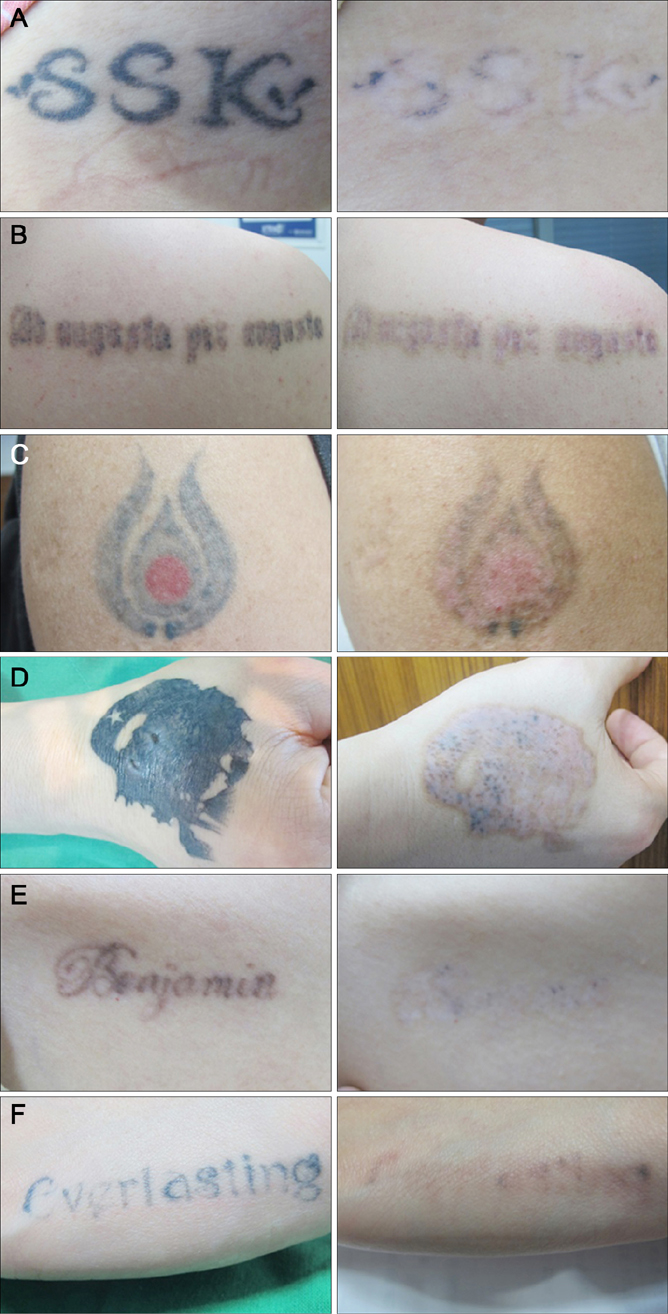Ann Dermatol.
2016 Oct;28(5):673-675. 10.5021/ad.2016.28.5.673.
Successful Treatment of Tattoos with a Picosecond 755-nm Alexandrite Laser in Asian Skin
- Affiliations
-
- 1Department of Dermatology, Asan Medical Center, University of Ulsan College of Medicine, Seoul, Korea. csesnumd@gmail.com
- 2Chois Dermatology Clinic, Seoul, Korea.
- KMID: 2382906
- DOI: http://doi.org/10.5021/ad.2016.28.5.673
Abstract
- No abstract available.
Figure
Reference
-
1. Kent KM, Graber EM. Laser tattoo removal: a review. Dermatol Surg. 2012; 38:1–13.
Article2. Shah SD, Aurangabadkar SJ. Newer trends in laser tattoo removal. J Cutan Aesthet Surg. 2015; 8:25–29.
Article3. Saedi N, Metelitsa A, Petrell K, Arndt KA, Dover JS. Treatment of tattoos with a picosecond alexandrite laser: a prospective trial. Arch Dermatol. 2012; 148:1360–1363.
Article4. Brauer JA, Reddy KK, Anolik R, Weiss ET, Karen JK, Hale EK, et al. Successful and rapid treatment of blue and green tattoo pigment with a novel picosecond laser. Arch Dermatol. 2012; 148:820–823.
Article5. Alabdulrazzaq H, Brauer JA, Bae YS, Geronemus RG. Clearance of yellow tattoo ink with a novel 532-nm picosecond laser. Lasers Surg Med. 2015; 47:285–288.
Article
- Full Text Links
- Actions
-
Cited
- CITED
-
- Close
- Share
- Similar articles
-
- Treatment of Melasma and Post-Inflammatory Hyperpigmentation by a Picosecond 755-nm Alexandrite Laser in Asian Patients
- The Removal of Eyebrow Tattoos by the Q-switched Alexandrite Laser
- A Pilot Split-Neck Case Study to Compare the Efficacy of the Long-Pulsed 755 nm Laser and the 532 nm Picosecond Laser for Acrochordon Removal
- Successful Treatment of Mucosal Melanosis of the Lip with Q-switched Alexandrite Laser
- Effectiveness of a Fractional Picosecond 1,064-nm Laser in Improving Traumatic Scars with Depression



